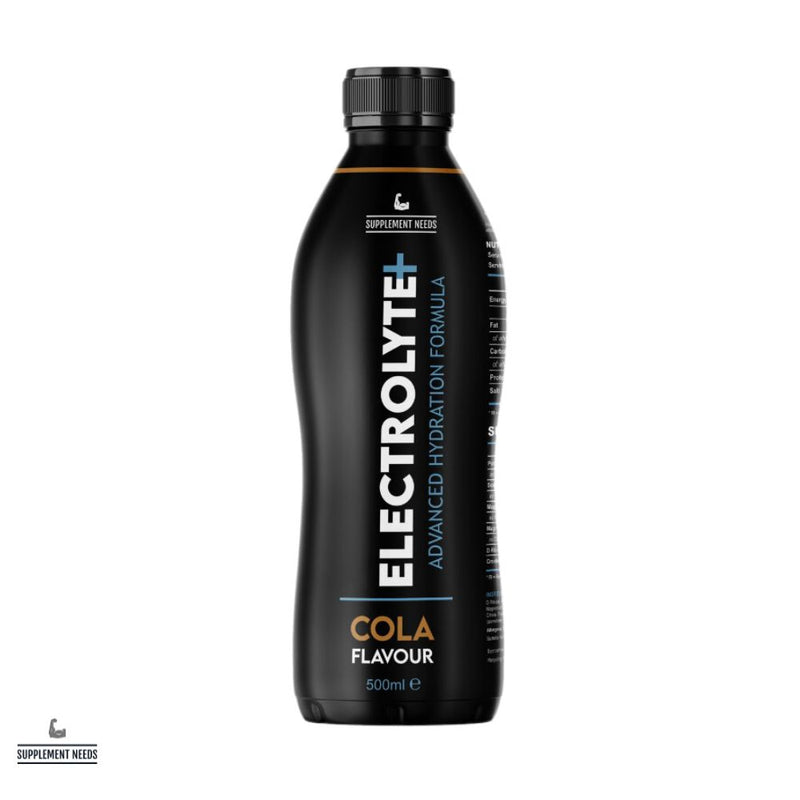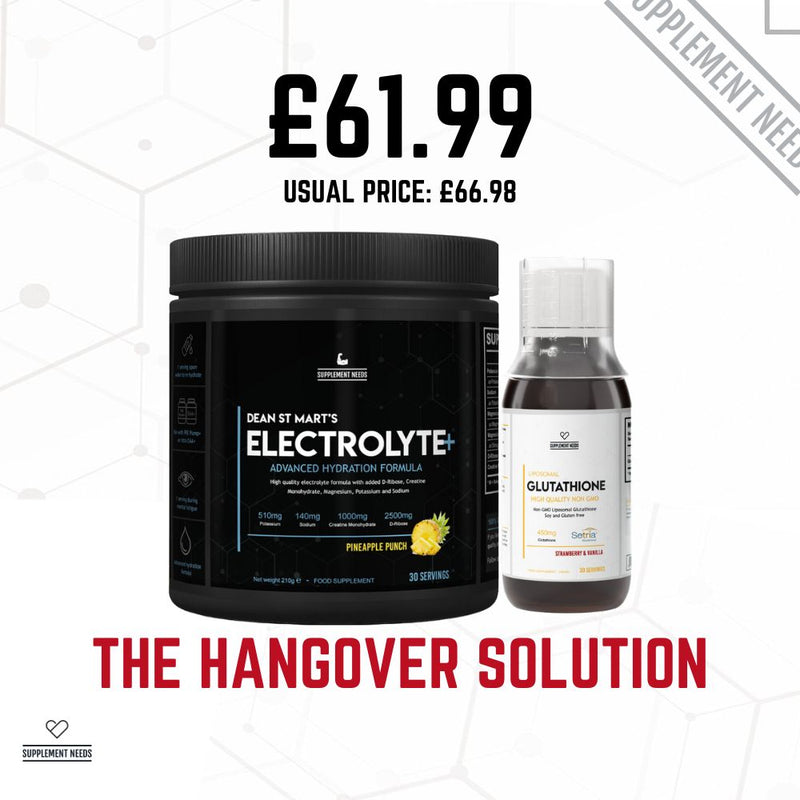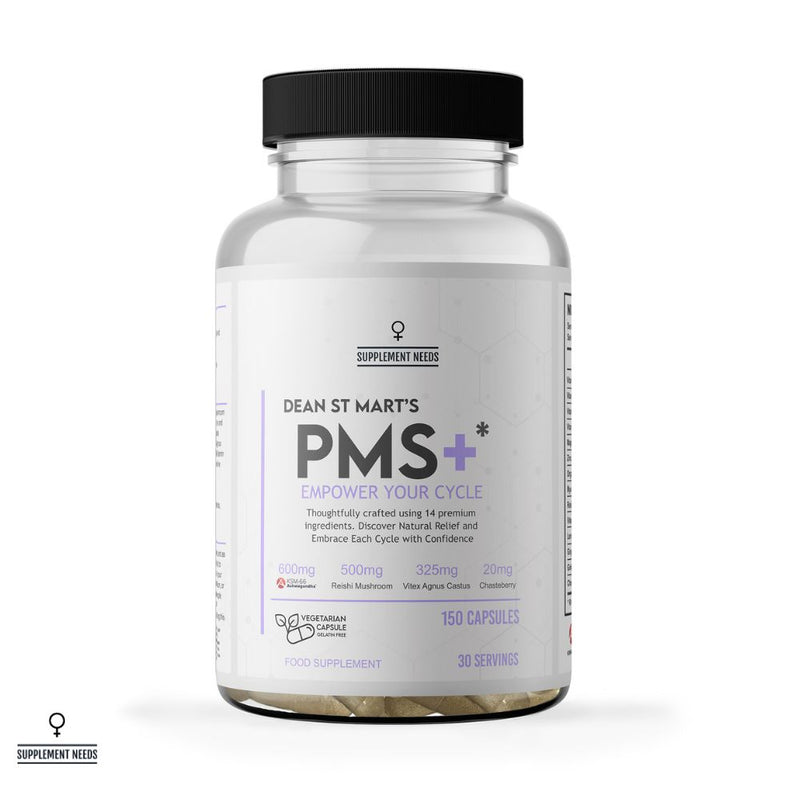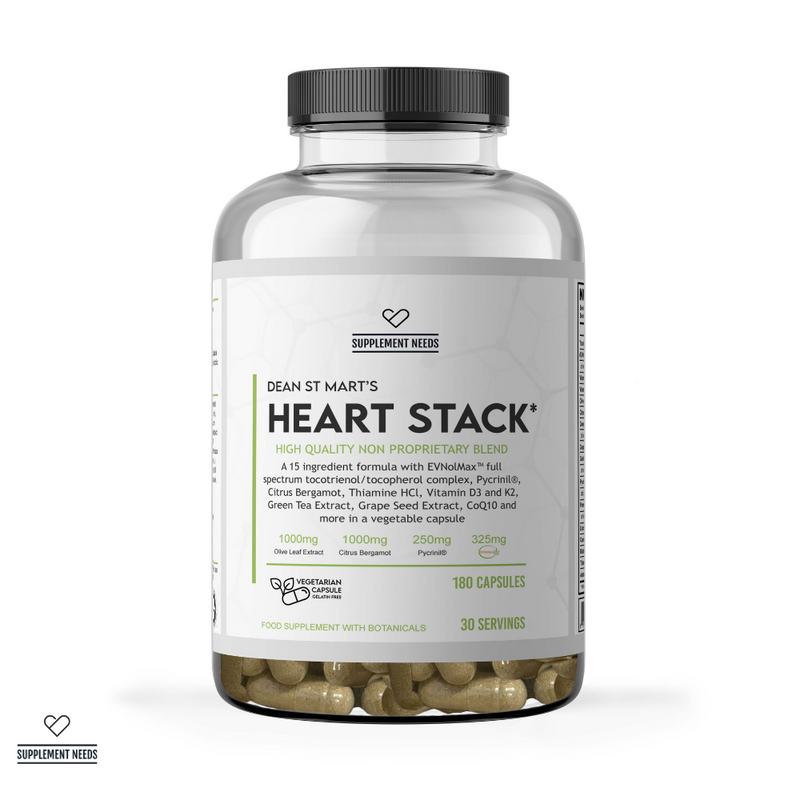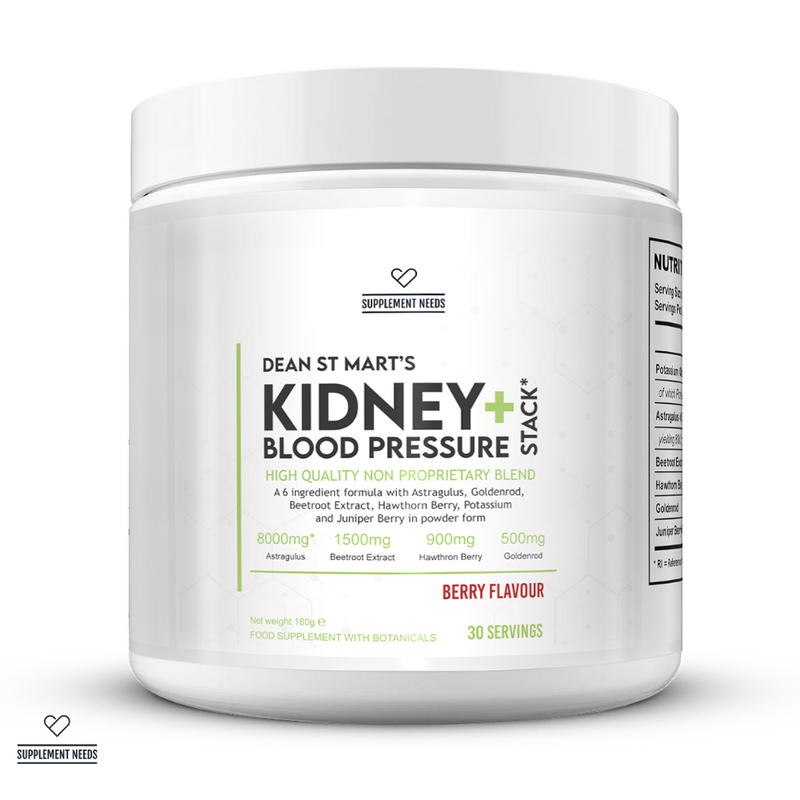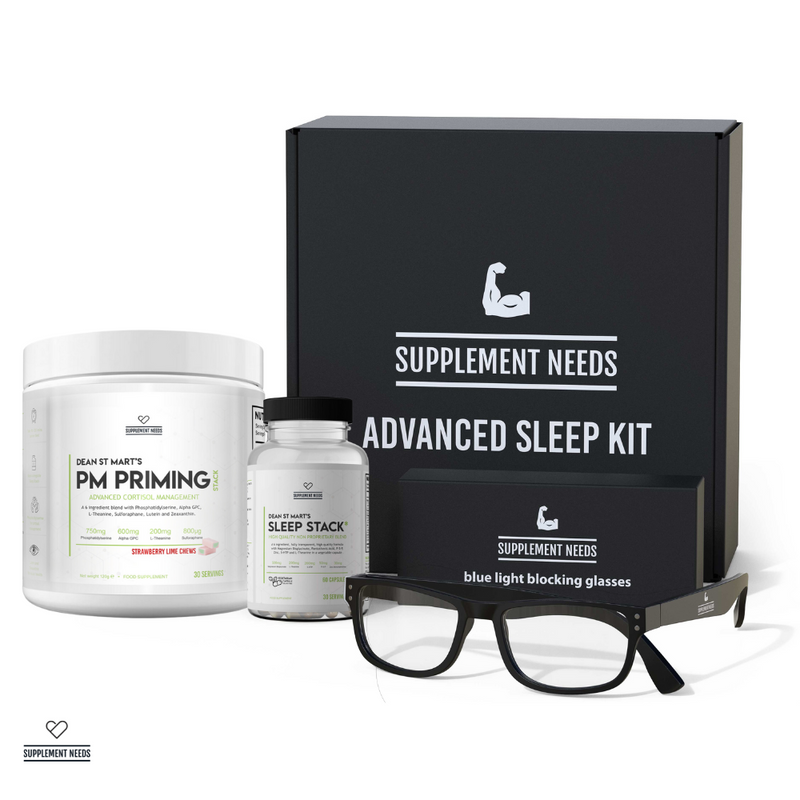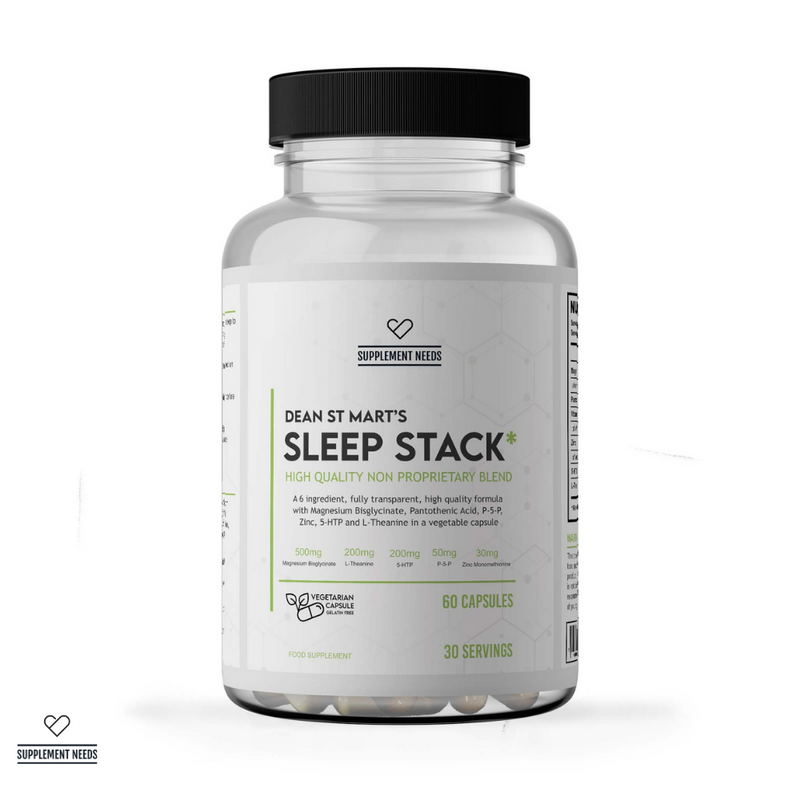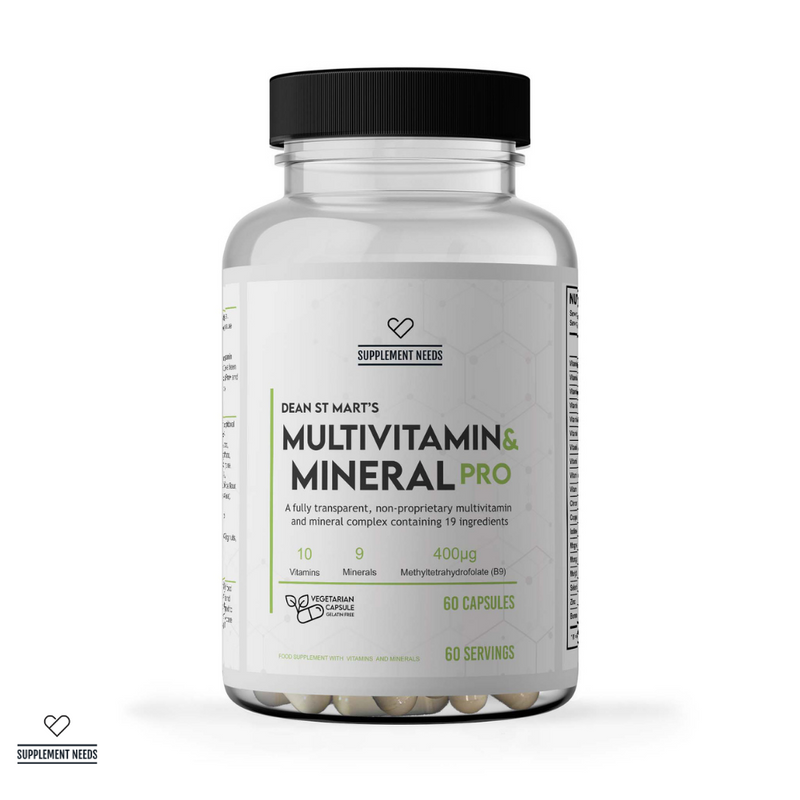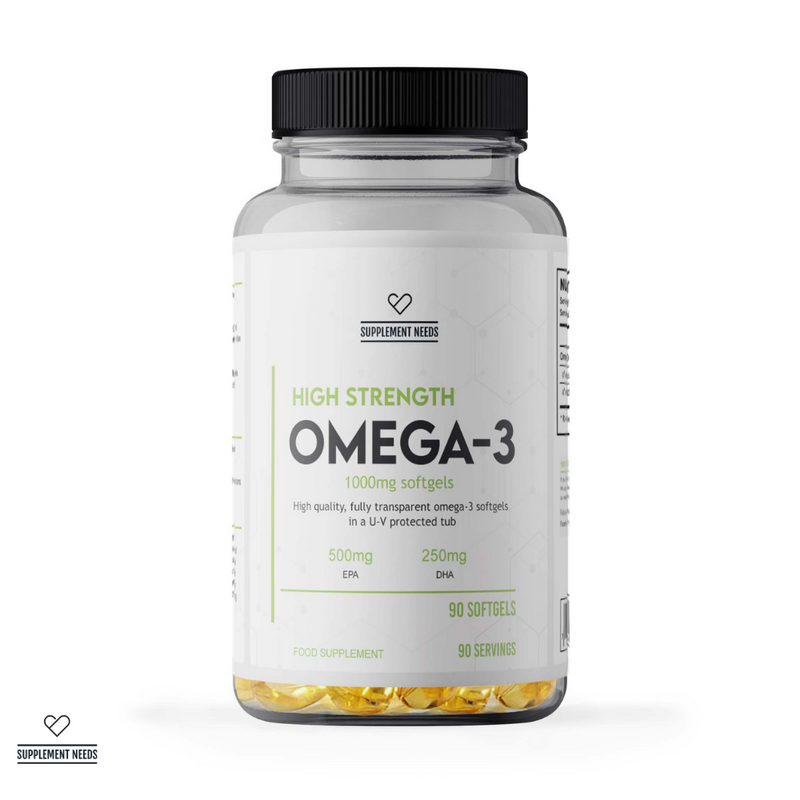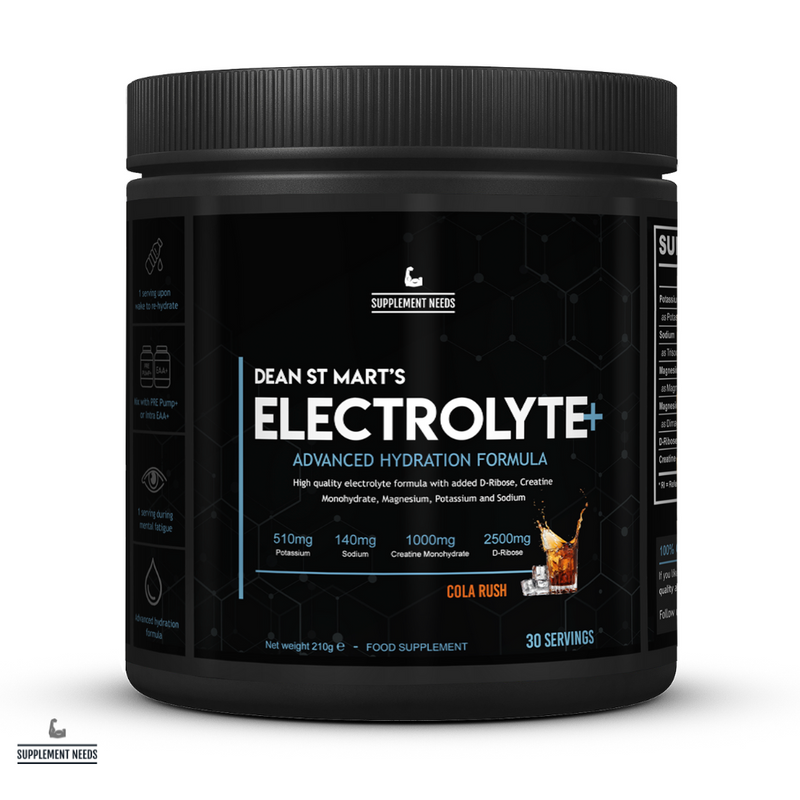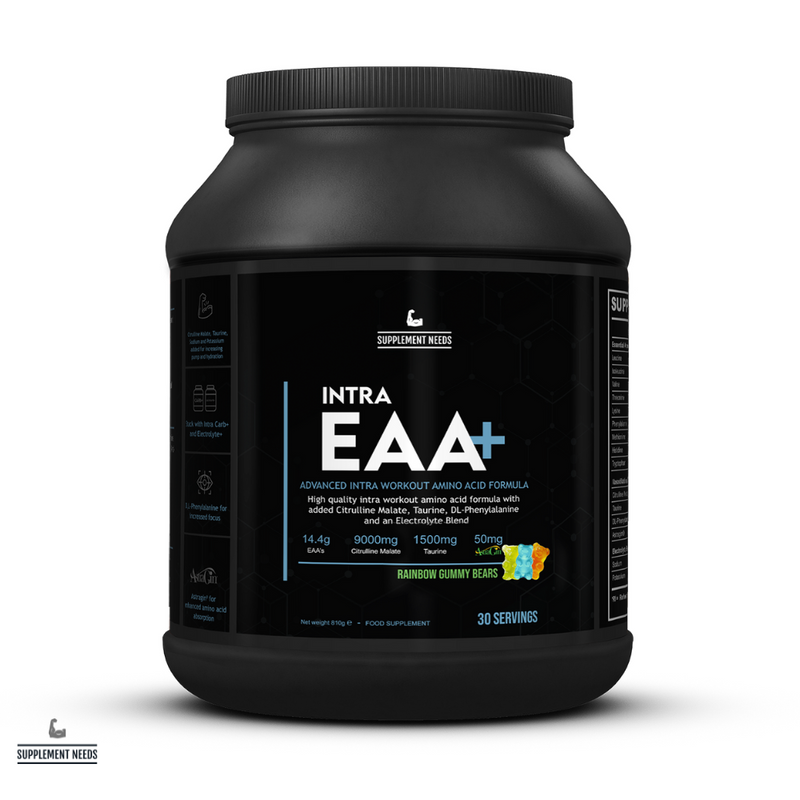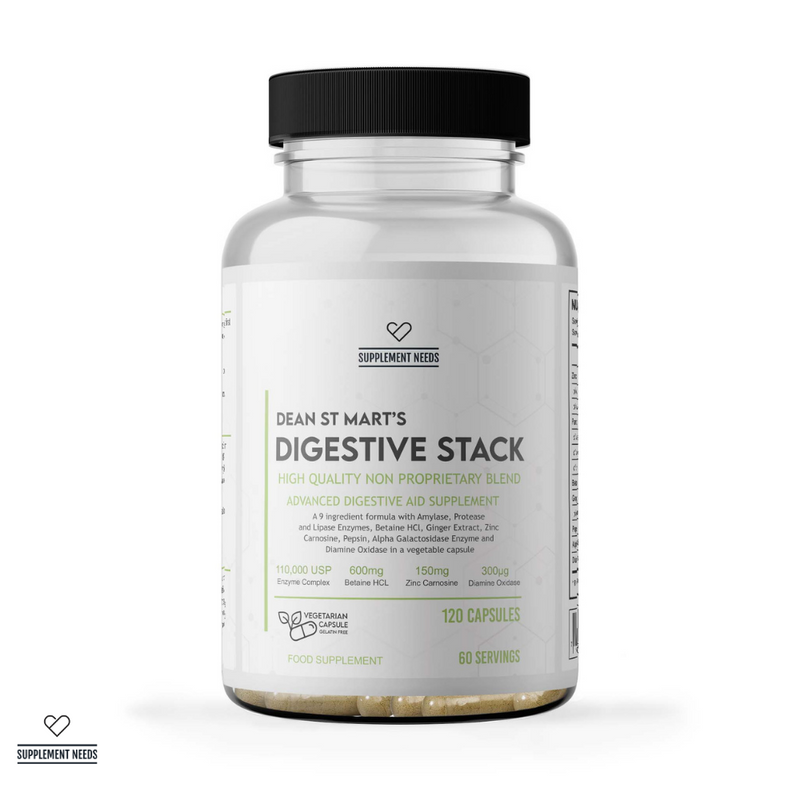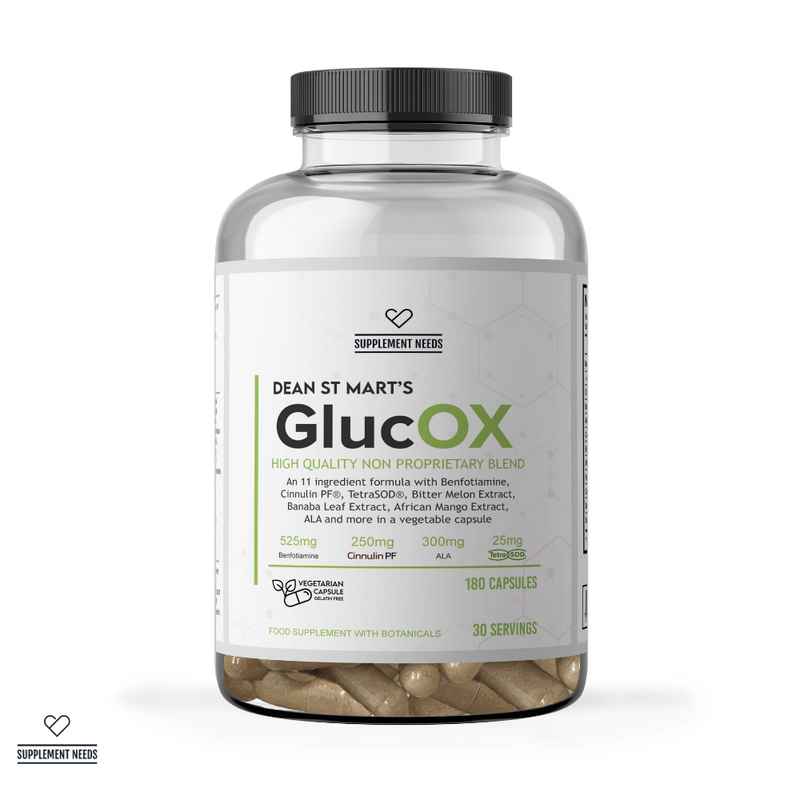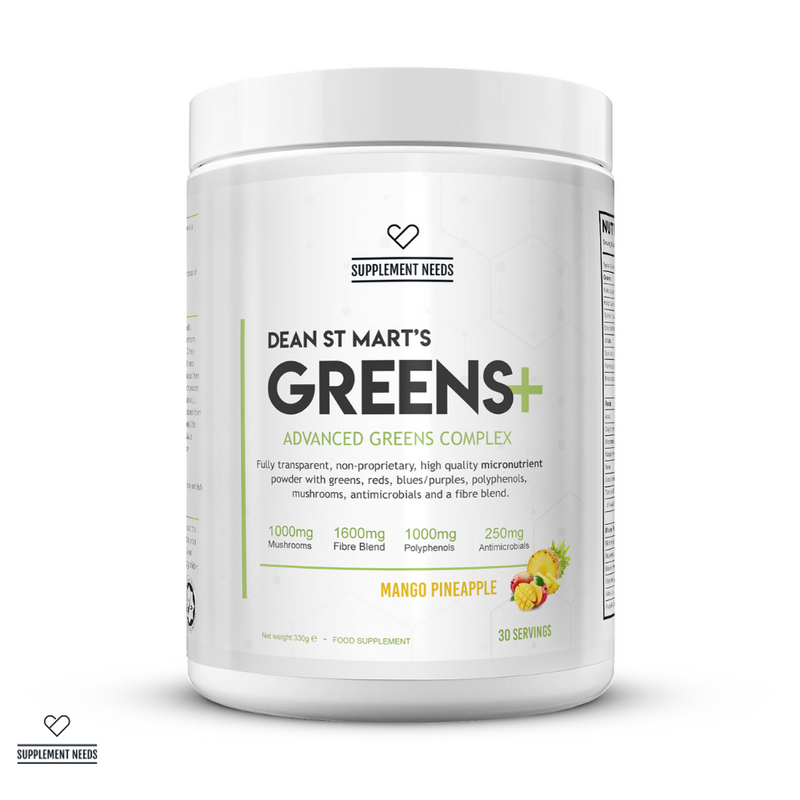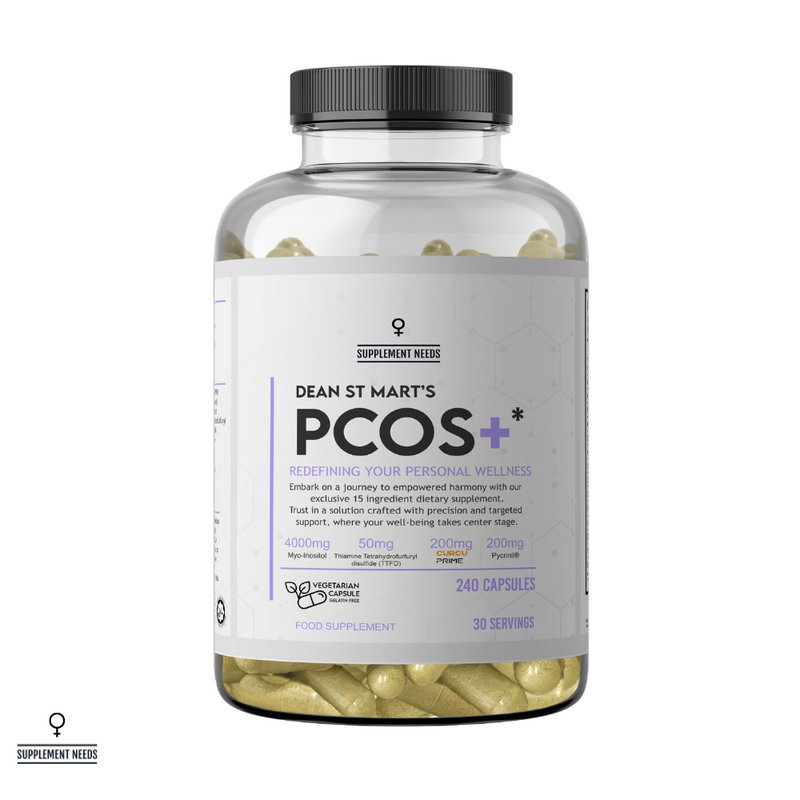Electrolytes; if you’re in any way interested in supplementation and health, then you’ve almost certainly heard of them. But, what exactly are they? And, what do they do? Discover the answer to these questions and more in the latest guide from the Supplement Needs team…
What are electrolytes?
The term ‘electrolyte’ is ubiquitous in the world of supplements - you’ll find scores of electrolyte powders and ready-to-drink formulations in supplement shops across the UK.
But, what exactly is an electrolyte?
The answer is one that requires us to go into considerable detail - but, as always at Supplement Needs - we’ll provide both the technical detail and a simple explanation.
The story begins with electricity…
Yes, you read that correctly. The human body relies on electrical signals to function.
If you remember back to your high school science lessons, you’ll remember that everything in the universe is made up of atoms. And, these atoms themselves are made up of protons, neutrons, and electrons.
Protons have a positive charge, neutrons have a neutral charge, and electrons have a negative charge.
As a whole, atoms can carry either a positive or negative charge as ions (that is, atoms are neutral particles. When they accrue a charge, they become an ion).
An ion is an atom (or group of atoms) that has a net electrical charge. By net, we are referring to the total charge when both positive and negative charges are taken into account. An example would be a Sodium ion that has 11 positive protons and 10 negative electrons. Looking at this on a net basis, the Sodium ion has a net electrical charge of +1.
It’s important to note that ions can be either positively or negatively charged (on a net basis). A positively charged ion is known as a cation, whilst a negatively charged ion is known as an anion.
Okay, enough of the science lesson. What does all this mean in practice?
Put simply, atoms can gain and lose electrons, with this ‘flow’ of electrons effectively being your body’s electricity network. It’s this flow of electricity that allows your body’s nervous system to send signals from point a to point b (e.g. from your brain to your hand).
So far, so good. But, where do electrolytes come into the picture?
Electrolytes are elements that ‘dissociate in solution’ and which can carry a positive or negative charge1.
Given their ability to carry a charge, electrolytes play a critically important role in your body’s central and peripheral nervous systems2, allowing electrical charge to pass within and between cells (through intracellular and extracellular fluid).
Examples of electrolytes
Hopefully, by now, you’ve grasped the critically important role that electrolytes play within the body. They’re effectively particles that facilitate and assist the movement of electrical signals throughout your body.
But, what are some examples? The most common electrolytes are:
- Sodium.
- Potassium.
- Chloride.
- Calcium.
- Magnesium.
- Phosphate.
- Bicarbonate.
All of these - with the exception of bicarbonate - are mineral electrolytes. Given that they are minerals, they are available from exogenous sources such as foodstuffs.
Take Sodium, for example. This is abundantly available in the Western diet, being found in sources as varied as table salt, pickled foods, cheeses and more. Minerals such as Magnesium can be sourced from nuts and seeds, whilst Potassium and Phosphate can be sourced from bananas, sweet potatoes, and red meat, poultry, and dairy products respectively.
Put simply, if you have a healthy diet, your body will be able to obtain the mineral electrolytes it needs to maintain the function of core bodily processes.
Note - have you spotted the odd one out? Not all electrolytes are mineral-based. Bicarbonate is a non-mineral electrolyte. You don’t need to find and consume exogenous sources of bicarbonate as your body produces it internally as part of your respiratory processes3.
Once metabolised, electrolytes effectively ‘infuse’ your body and will be present in both extracellular and intracellular fluid. Each type of electrolyte will be present in these fluids in different forms. For example, Sodium presents in extracellular fluid as a cation (positively charged). Chloride presents in extracellular fluid as an anion (negatively charged). In intracellular fluid, the major cation is Potassium4.
In this way, electrolytes help to maintain homeostasis - ensuring the human body can maintain its complex entanglement of feedback cycles and thus remain healthy5.
Which leads us to our next point… What do electrolytes actually do?
What do electrolytes do?
The average person who perhaps has a passing awareness of physiology will probably be aware that electrolytes assist with hydration. However, electrolytes do so much more. Below, we’ll explore the myriad ways in which electrolytes support overall bodily health and wellbeing.
Electrolytes and the nervous system
As you’ll have probably gathered from the previous section of this article, electrolytes support the proper function of your body’s nervous system.
The nervous system is ‘the major controlling, regulatory, and communicating system in the body’ and is composed of a mix of organs and tissues, including the brain, spinal cord, nerves and ganglia6.
As you would expect, your nervous system has an enormous role to play in your body’s overall function (and the way in which you experience and interact with your environment). However, it’s possible to group the nervous system’s functions into three areas:
- Sensory.
- Integrative.
- Motor.
The first of these activities - sensory - involves your nervous system detecting changes (both inside and outside the body). Examples of external changes include stimuli such as temperature changes, sounds and changes in light levels. Internal stimuli include variations in pressure, pH levels, CO2 concentration, electrolyte levels and more.
The second of these activities - integrative - involves your nervous system taking these internal and external stimuli and transmitting them to the brain in the form of nerve impulses. At this point, the nerve impulses are transmuted into thoughts, sensations and memories.
The third of these activities - motor - involves your nervous system, based on the sensory and integrative processes outlined above, sending signals to your muscles and glands - thus allowing you to undertake motor functions. In the context of your nervous system, both your muscles and glands are defined as ‘effectors’ as they can produce an effect in response to signals from the nervous system7.
Have you spotted the recurring theme? Yes, it’s the continual sending of nerve impulses throughout the nervous system. From detecting stimuli to triggering motor functions, nerve impulses lie at the heart of the operation of the nervous system.
And, in turn, electrolytes lie at the heart of nerve impulses.
So, how do electrolytes affect nerve impulses? First, we must understand how nerves themselves function.
Nerves - at their most foundational level - consist of nerve cells (most commonly known as neurons). Neurons consist of a cell body which is mated to special extensions called axons and dendrites. When enough of these axons cluster together, we have what are commonly recognised as ‘nerves’.

Whilst this ‘anatomy’ is uniform, neurons are deployed by the body to undertake a variety of different roles. These include:
- Motor neurons - which transmit messages from the brain to actuate muscles.
- Sensory neurons - which detect external stimuli such as light and temperature changes, communicating these to the brain.
- Interneurons - these are neurons that sit ‘in between’ other neurons (such as motor neurons and sensory neurons). Interneurons help to relay signals across the body - effectively helping to modulate what is and isn’t sent along.
Note - scientists often classify neurons in different ways. For example, some scientists make a distinction between whether neurons are protected by myelination. Scientists also classify neurons based on their structural differences e.g. multipolar neurons, unipolar neurons, bipolar neurons, and pseudo-unipolar neurons.
So, where do electrolytes come into all this?
Well, when a neuron wants to communicate with another, it will send an electrical signal down the length of its axon. Once the signal reaches the end of the axon, it will change into a chemical signal that consists of neurotransmitters. This chemical signal enters the synapse and moves until it encounters the dendrite of another neuron. Here the chemical signal is converting back into an electrical one and the process continues until the signal reaches the intended part of the body.
Electrolytes facilitate this process by supporting a chain reaction across the length of the nerve cell axon. In effect, electrolytes move across the nerve cell membrane, moving the change in charge (a.k.a. the nervous impulse) along the cell8.
To put this more simply, electrolytes help drive nerve impulses along nerve cells - and thus help your nervous system communicate with different parts of the body.
More broadly, the ‘electric tissues’ of the body (that is, the muscles and neurons) rely on electrolytes to carry electrical impulses through the fluid that sits inside, outside and between cells.
It’s for this reason that your body requires an appropriate amount of electrolytes (which must be replenished daily).
Electrolytes and hydration
Perhaps the most widely recognised role of electrolytes is in relation to maintaining bodily hydration.
More particularly, electrolytes ensure that the body’s cells are properly hydrated. In order for cellular function to occur unhindered, cells require what’s known as ‘fluid balance’9.
Too little fluid (e.g. in cases of prolonged dehydration) and cells can shrivel up. Too much water (e.g. as the result of an oedema), and cells can actually burst. Neither of these scenarios is a healthy one!
Thus, to ensure optimal cellular fluid balance, it is important that the body has sufficient volumes of electrolytes.
Cells are able to maintain an appropriate fluid balance by pumping electrolytes in and out of themselves. They do this to balance out the concentrations of dissolved electrolytes on each side of the cell membrane.
To put this another way, cells use electrolytes to maintain cellular hydration via ‘osmotic pressure’. Where the body has the correct balance of electrolytes, this osmotic pressure ensures there is a balance of fluids across the cellular membrane10.
When you consider this, it’s clear why your body doesn’t just need water, but electrolytes, too. Electrolytes really do play a critical role in maintaining proper bodily function.
Electrolytes and blood acidity
One of the little known jobs of electrolytes is to help regulate the acidity of your blood.
Your blood can be more or less acidic or alkaline depending on the concentration of acids and bases circulating through the bloodstream.
This is important as many of your body’s processes produce acid - and therefore it’s important that the body is able to maintain an appropriate blood acidity level.
The human body tends to maintain its blood pH level at around 7.35 to 7.45 (a lower pH means your blood is more acidic, whilst a higher pH means your blood is more basic). Outside that pH range, you can suffer from conditions such as alkalosis or metabolic acidosis - both of which can result in some pretty unpleasant symptoms.
Your body - when in a healthy state - maintains its blood acidity levels using what are known as ‘buffer systems’. These buffers are approximately divided into intracellular and extracellular buffers11.
In terms of electrolytes, it is predominantly bicarbonate and phosphate that help to ‘buffer’ the blood to ensure it is neither too acidic nor too basic.
This is particularly important when you consider the effect of intense exercise on blood acidity levels. Think of it like this; when the body needs energy for muscle contraction it will obtain this energy from the hydrolysis of ATP. That’s all well and good, but the hydrolysis of ATP results in the production of excess H+ ions.
With an excess level of H+ ions present, the blood pH (potential for Hydrogen) level of an athlete will increase significantly - thus having a negative impact on their performance12.
That’s a rather technical way of saying that your body’s buffering capacity is admittedly finite - but that electrolytes are an essential part of regulating and supporting those buffering processes.
Electrolytes and muscle contraction
When we said earlier that electrolytes were important, we really did mean it! Aside from the role they play in hydration, nervous system function and blood buffering, electrolytes are also important for proper muscle function.
As we have seen, the muscles in your body (as the ‘electric tissues’) contract with the assistance of an electrical charge. Once they receive a signal from a motor neuron, muscles will ‘actuate’ and carry out a motor function - such as contracting.
However, as we have also seen, electrical signals will only reach the muscles if they can pass through a suitably conductive solution/fluid. This is where our old friends electrolytes come in…
In terms of muscle contraction, it’s the electrolytes Magnesium and Calcium that have the biggest part to play. Magnesium and Calcium effectively compete against each other to bind to muscle proteins - such as troponin C and myosin.
If Calcium comes out on top in this battle and binds to the proteins, it causes them to change their shape - which in turn causes the muscle to contract. Conversely, if Magnesium wins the fight and binds to the muscle proteins it causes the muscle to relax.
So, the interplay between these two electrolytes - calcium and magnesium (with the latter effectively acting as a calcium inhibitor) - is integral to muscle function.
It’s for this reason that a deficiency of Magnesium - sometimes as a result of excessive sweating following intensive exercise - can result in the development of muscle cramps. As one study found, urinary and sweat losses associated with strenuous exercise ‘may increase magnesium requirements by 10-20%’13. Further, the same study found that ‘Athletes participating in sports requiring weight control (e.g. wrestling, gymnastics) are apparently especially vulnerable to an inadequate magnesium status’.
There is also limited evidence to suggest that the supplementation of electrolytes can delay the onset of exercise-associated muscle cramps (EAMCs). To quote one study verbatim, ‘Consumption of a carbohydrate-electrolyte beverage before and during exercise in a hot environment may delay the onset of EAMCs, thereby allowing participants to exercise longer’14.
What happens when your body is low on electrolytes?
Electrolytes are important - and by extension - being deficient in core electrolytes can have some detrimental impacts upon your health and wellbeing.
Below, the Supplement Needs team has set out some of the conditions that can arise as a result of being deficient in certain electrolytes.
Hyponatraemia
Arguably the most common (or at least well known) symptoms associated with an electrolyte deficiency is hyponatraemia.
This is a condition in which Sodium levels in the bloodstream become extremely low. The UK’s National Institute for Health and Clinical Excellence (NICE) defines hyponatraemia as being ‘a serum sodium concentration of less than 135 mmol/L15.
Given that Sodium plays such an important role in fluid balance and cellular hydration, the symptoms of hyponatraemia can be extensive. These include confusion, light-headedness, and agitation.
Note - it’s important to be aware that (according to NICE) most people with hyponatraemia are asymptomatic, with the condition often being an incidental finding during routine blood tests.
Whilst hyponatraemia is perhaps the most well known condition associated with electrolyte imbalances, there are several other conditions that are linked to either excessive or deficient levels of electrolytes in the body:
- Hypernatraemia - a condition where blood levels of Sodium are too high.
- Hypokalemia - a condition caused by low blood levels of Potassium.
- Hypochloraemia - a condition in which blood levels of Chloride have become abnormally low.
- Hypomagnesaemia - an electrolyte imbalance whereby blood levels of Magnesium are very low.
- Hypermagnesaemia - a condition in which blood levels of Magnesium are too high.
Understanding dehydration
For many athletes, weekend warriors and those just trying to get fitter, there is a strong connection between intense exercise, sweat and the need to potentially top up electrolytes.
But, what exactly is dehydration?
In the simplest terms, dehydration refers to a net loss of water from the body.
We all require water on a daily basis in order to meet the body’s physiological demands. Water is used to transport nutrients and oxygen around the body (via the blood). Water is also required to remove metabolic waste products (e.g. carbon dioxide from our respiratory system).
Water also has cleansing and protective properties for the body. As the Association of UK Dietitians explains, ‘From our blood system carrying essential glucose, oxygen and nutrients to cells, to the kidneys getting rid of waste products we no longer want, fluid in the body is vital to allow these to occur. It also lubricates our joints and eyes, helps our digestive system function and keeps our skin healthy’16.
It follows then, that dehydration is a state that should be avoided. However, did you know that there are a number of different types of dehydration?
Note - as Supplement Needs’ product formulator Dr. Dean St Mart PhD regularly points out, many people mistake dehydration for tiredness. If you find yourself feeling lethargic by mid-afternoon, it’s more likely that you’re dehydrated rather than actually physiologically fatigued. In such instances, drinking diuretics such as coffee can actually make your lethargy worse!
What are the different types of dehydration?
As we have seen, dehydration isn’t simply a matter of losing water on a net basis from your body.
Your sweat isn’t purely water, but also contains trace amounts of minerals (e.g. electrolytes), lactic acid and urea.
Because of this, scientists consider there to be different types of dehydration.
Isotonic dehydration
This is widely regarded as the most common form of dehydration and sees your body losing both water and Sodium on an approximately equal basis.
This form of dehydration has multiple causes, including; intense exercise, diarrhoea and vomiting17.
Hypertonic dehydration
Less common is hypertonic dehydration. This is a form of dehydration whereby the body loses more water than it does Sodium - causing an imbalance.
Hypertonic dehydration can have myriad causes, however it’s widely agreed that the common cause of hypertonic dehydration is insufficient water intake. Other causes of hypertonic dehydration (in tandem with insufficient water intake) include hyperventilation or the loss of hypotonic fluids via the skin, gastrointestinal tract, or kidneys18.
Hypotonic dehydration
In contrast to hypertonic dehydration, hypotonic dehydration is a scenario whereby the body loses more Sodium than it does water - again, creating an imbalance.
Hypotonic dehydration can have many underlying causes, however, it often occurs as a result of intense exercise, insufficient replacement of electrolytes and changes to diets or regimens (e.g. fasting).
The common thread that weaves throughout these forms of dehydration is insufficient fluid intake and excessive fluid (and electrolyte loss).
What are the symptoms of dehydration?
The earlier stages of dehydration are often asymptomatic. However, as your body becomes progressively more dehydrated, it will begin to present symptoms such as:
- A sensation of thirst that becomes progressively worse.
- The onset and then development of a headache.
- Fatigue and general tiredness.
- Muscle cramps.
- Dry skin and lips.
- Nausea (and, in bad cases, vomiting).
- Rapid heartbeat.
Many of these symptoms can be hard to pinpoint (e.g. if you’ve got a headache, is it definitely caused by dehydration?). It’s for this reason that Supplement Needs product formulator Dr. Dean St Mart PhD has developed a simple method for determining whether you are dehydrated. It goes by the initialism WUT:
- Morning scale weight (W).
- Urine colour (U).
- Thirst perception (T).
Should you find that your scale weight has reduced by more than one percent, your urine is a dark colour (it should be a pale straw colour), and you have a persistent thirst, these are signs that you are dehydrated.
Why does the body lose electrolytes?
Given that electrolytes do so much to support and maintain the body, why does the body seem to shed them so much? Like many physiology-based questions, there are multiple answers.
Water turnover
The primary way in which the body loses electrolytes is through its natural process of ‘water turnover’.
Everyday - whether you consciously realise it or not - you must drink water (or water-containing beverages). You need to do this, as your body is simultaneously expelling water from the body.
This process of both consuming water and expelling it is known as ‘bodily water turnover’ (also known as body water homeostasis). Although the exact number is contested, some scientists suggest that water turnover in the median human can be between 5 and 10% of total body water per day19.
For many people, water intake is fairly obvious - you obtain water from both fluids and foodstuffs that are consumed orally. But, how are fluids (and thus electrolytes) lost from the body?
As per Kenney, Wilmore and Costill (1963), the body loses water in the following ways and proportions20:
- Insensible perspiration (e.g. transepidermal water loss from the skin) and insensible water loss from the respiratory tract: >30%.
- Sweat: 5%.
- Faeces: 5%.
- Urine: 60%.
As you can see, the human body ‘passively’ loses a great deal of fluid in addition through the more ‘obvious’ routes such as urine and sweat.
The question is, how important is water turnover for health?
It’s a question that’s been explored by a multiplicity of researchers, with some interesting conclusions having been reached. Perhaps the most notable is the study21 that concluded that:
‘Healthy individuals have a higher body water turnover than unhealthy individuals whose metabolic balance, as indicated by water turnover, has broken down, and that a prolonged condition of excessively slow body water turnover may be associated with a lower level of metabolism. If so, body water turnover can be an indicator of human health’.
Water turnover, then, is one of the ways in which the body loses electrolytes.
Intense exercise
Another commonly understood cause of electrolyte loss is intense exercise - or, to be more precise - excessive sweating as a result of intense exercise.
After all, sweat plays an important thermoregulatory role in transferring excess heat away from the body - which naturally becomes hot during exercise. As your body increases in temperature, your central and skin thermoreceptors will detect this and send a signal to the preoptic hypothalamic region of the brain. Your brain will then stimulate sweating and cutaneous vasodilation in order to dissipate the build up of heat22.
Bear in mind that the amount of heat generated by your body during exercise can be a not inconsiderable amount. Scientists have suggested that ‘during strenuous exercise, the body’s heat production may exceed 1,000W’23.
As we saw earlier, sweat is made up of a variety of substances, including water, electrolytes and metabolites (e.g. lactate, urea, and ammonia). However, the main electrolytes that are typically lost through sweat are Sodium and Chloride (although studies have also shown that significant amounts of Potassium can be lost via exercises such as running24).
Further studies25 have found that, ‘Total sweat Na+ (Sodium) and Cl- (Chloride) losses increased by ~150% with increased exercise intensity’.
It certainly seems to be the case that intense exercise is potentially linked with increased electrolyte loss.
The question is, what volumes of electrolytes are you possibly losing?
Studies have looked at the exact electrolyte composition of sweat, with one study26 finding electrolytes as follows:
- Sodium: 0.9 gram/litre.
- Potassium: 0.2 gram/litre.
- Calcium: 0.015 gram/litre.
- Magnesium: 0.0013 gram/litre.
It’s interesting to note that studies have demonstrated that different sporting activities result in different sweat rates. One study27 found that the highest sweat rates have been observed in endurance-based sports and American football (although the study does heavily caveat that individual variation needs to be taken into account).
So, although not conclusive, this study can provide you with some food for thought regarding your own training regime and electrolyte supplementation.
Note - you can sometimes physically ‘see’ lost electrolytes following an intense workout. The white, chalky lines and patches that show up on your work-out kit are electrolytes like Sodium! If you experience this a lot, then you may be what some experts call a ‘salty sweater’ with a large volume of electrolytes in your sweat.
What to look for in an electrolyte supplement
Think it’s time to start adding an electrolyte supplement to your diet? Then make sure you do your research first.
If you’re a regular reader of the Supplement Needs blog, then you’ll be aware of our tried and tested adage - not all supplements are created equal!
And, that’s exceptionally true when it comes to the world of electrolyte supplements.
So, what should you look for in a premium, high-quality electrolyte supplement? The best way to answer this question is to look at what is (arguably) the highest quality electrolyte drink on the market - the Supplement Needs Electrolyte+.
Supplement Needs Electrolyte+
Developed by renowned industry expert, Dr. Dean St Mart PhD, Supplement Needs Electrolyte+ has been researched and formulated for maximal electrolyte uptake and hydration for everyone from bodybuilders and weekend warriors to people on their fitness journey.

Supplement Needs Electrolyte+ 210g
Efficacious dosing
Firstly, consider that Supplement Needs Electrolyte+ has been formulated to contain efficacious doses of the body’s core electrolytes:
- Potassium: 510mg.
- Sodium: 140mg.
- Magnesium: 45mg.
(All doses are measured per 7g serving size).
Now, we can’t name any names - but this compares very favourably compared to many of the ‘big name’ electrolyte powders on the market. With Supplement Needs Electrolyte+ you’re definitely getting more ‘bang for your buck’.
Certain electrolyte brands also effectively ‘pad out’ their electrolyte supplements with massive amounts of Sodium - with lower volumes of the more expensive electrolytes such as Potassium and Magnesium.
Bioavailable ingredients
Supplement Needs Electrolyte+ also stands out from the pack thanks to its inclusion of highly-bioavailable ingredients.
Our Electrolyte+ contains 500mg of Magnesium Taurate (per 7g serving). This is a form of Magnesium which has been bonded to the amino acid Taurine.
In this chelated form, Magnesium is highly bioavailable, meaning it’s much more likely to be absorbed by your small intestine (the amino acid effectively providing a piggyback to the Magnesium and helping it pass through the intestinal wall).
As an aside, some studies have suggested that Magnesium Taurate can contribute to antihypertensive and cardioprotective activity, thanks in large part to potent antioxidant characteristics. One study even suggests that Magnesium Taurate can ‘be used as a nutrition supplement to improve cardiovascular health’28.
If you choose a cheaper electrolyte supplement, you’ll typically find that they don’t include the chelated forms of electrolytes - meaning you’ll effectively urinate out the electrolytes. What a waste of money!
Additional ingredients
Dr Dean has formulated Supplement Needs Electrolyte+ to include additional ingredients that can potentially enhance performance and wellbeing.
One of these additional ingredients is D-Ribose (at 2,500mg per 7g serving). Given that D-Ribose is a type of simple sugar that is an essential component of ATP (Adenosine Triphosphate) - the main energy source of our cells - you can see why this is a beneficial ingredient in an electrolyte supplement.
Another additional ingredient in Electrolyte+ is Creatine Monohydrate (at 1,000mg per 7g serving). Why add Creatine to an electrolyte supplement? Because, as studies have suggested, Creatine can potentially assist with cognitive performance. How? Because, once metabolised, Creatine is stored in brain cells as Phosphocreatine. When demand upon brain cells is high, they can, in turn, use this stored Phosphocreatine to regenerate ATP and thus access more energy29.
Other studies30 have borne out this observation, finding that creatine supplementation ‘may have a small beneficial effect’ on cognitive function.
Other things to look for in an electrolyte supplement
In addition to the points described above, what else should you look for in an electrolyte supplement? Here at Supplement Needs our Electrolyte+ ticks all the following ‘essentials’:
-
Manufactured in the UK to Good Manufacturing Practices and ISO standards - these ensure our Electrolyte+ is produced to the highest, most impeccable standards. ✅
-
Developed by experts - bear in mind that supplements are only as good as the people who have formulated them. And Supplement Needs Electrolyte+ has been formulated by the best - Dr. Dean St Mart PhD. Dr Dean holds a double first class honours degree in chemistry and pharmaceutical chemistry. He also holds a PhD in synthetic organic chemistry and fluorescence spectroscopy. There are few supplement brands that can boast such expert formulators! ✅
-
Value - be wary of electrolyte supplements that are loaded with cheap ingredients like Sodium at the expense of more expensive ingredients like Magnesium. As we’ve shown in this article, Supplement Needs Electrolyte+ offers incredible value for money when you consider the dosage of electrolytes. ✅
-
High-quality, biologically active ingredients - look for premium supplements like Supplement Needs Electrolyte+ that contain the bioavailable form of ingredients, aiding absorption and ensuring that your body actually absorbs the electrolytes! ✅
-
Available in delicious flavours - it’s a bit of a myth that electrolyte supplements have to taste salty and unpleasant. In fact, the opposite is true! Supplement Needs Electrolyte+ is available in four delicious flavours; Cola Rush, Blackcurrant Burst, Citrus Twist, and Pineapple Punch. ✅
- Available in convenient formats - whether you want to carefully create your own electrolyte drink, or you want to be able to grab a pre-made electrolyte drink, Supplement Needs has got you covered. Supplement Needs Electrolyte+ is available in a 210g tub in powdered form, or in a ready-to-drink format so you can top up your electrolytes on the go. We also offer a neat 7g electrolyte sachet so you can try it first. ✅

Supplement Needs Electrolyte+ RTD - 18 Pack
Want the best electrolytes? Then buy Supplement Needs Electrolyte+
We hope you’ve found this guide to electrolytes both interesting and useful. If you’d like to see how electrolytes can potentially contribute to your wellbeing goals, then try Supplement Needs Electrolyte+ today.
Shop the Supplement Needs Electrolyte range now
For more insights and information about supplements, read the Supplement Needs blog…
Why You Should Avoid Cheap Vitamins & Multivitamins | What Are the Potential Benefits of Magnesium Bisglycinate? | What Are the Best Supplements for Gut Health & Digestion?
Disclaimer
The information on this website should not be used as a substitute for professional medical advice or care. If you have questions about your health, please contact your doctor.
References
1. Terry J, The major electrolytes: sodium, potassium, and chloride [online]. Available at: https://pubmed.ncbi.nlm.nih.gov/7965369/ (Accessed on 28th May 2024).
2. Shrimanker I, Bhattarai S. Electrolytes [online]. Available at: https://www.ncbi.nlm.nih.gov/books/NBK541123/ (Accessed on 28th May 2024).
3. Shaw I, Gregory K. Acid-base balance: a review of normal physiology [online]. Available at: https://www.ncbi.nlm.nih.gov/pmc/articles/PMC9482868/ (Accessed on 28th May 2024).
4. Terry J. The major electrolytes: sodium, potassium, and chloride [online]. Available at: https://pubmed.ncbi.nlm.nih.gov/7965369/ (Accessed on 28th May 2024).
5. Billman G. Homeostasis: The Underappreciated and Far Too Often Ignored Central Organising Principle of Physiology [online]. Available at: https://www.ncbi.nlm.nih.gov/pmc/articles/PMC7076167/ (Accessed on 28th May 2024).
6. NIH National Cancer Institute SEER Training Modules. Introduction to the Nervous System [online]. Available at: https://training.seer.cancer.gov/anatomy/nervous/ (Accessed on 28th May 2024).
7. National Library of Medicine: National Centre for Biotechnology Information. In brief: How does the nervous system work? [online]. Available at: https://www.ncbi.nlm.nih.gov/books/NBK279390/ (Accessed on 28th May 2024).
8. Bigler-Coyne A. Pass the Salt: Sodium’s Role in Nerve Signalling and Stress on Blood Vessels [online]. Available at: https://biobeat.nigms.nih.gov/2020/11/pass-the-salt-sodiums-role-in-nerve-signaling-and-stress-on-blood-vessels/ (Accessed on 28th May 2024).
9. Roumelioti M, Glew R, Khitan Z et al. Fluid balance concepts in medicine: Principles and practice [online]. Available at: https://www.ncbi.nlm.nih.gov/pmc/articles/PMC5760509/ (Accessed on 28th May 2024).
10. Shrimanker I, Bhattarai S. Electrolytes [online]. Available at: https://www.ncbi.nlm.nih.gov/books/NBK541123/#_NBK541123_pubdet_ (Accessed on 28th May 2024).
11. Hamm L, Nakhoul N, Hering-Smith K. Acid-Base Homeostasis [online]. Available at: https://www.ncbi.nlm.nih.gov/pmc/articles/PMC4670772/ (Accessed on 28th May 2024).
12. The University of Western Australia. Background Sheet: Buffering systems in the human body [online]. Available at: https://www.uwa.edu.au/study/-/media/Faculties/Science/Docs/Buffering-systems-in-the-human-body.pdf (Accessed on 28th May 2024).
13. Nielsen F, Lukaski H. Update on the relationship between magnesium and exercise [online]. Available at: https://pubmed.ncbi.nlm.nih.gov/17172008/ (Accessed on 28th May 2024).
14. Jung A, Bishop P, Al-Nawwas, Dale R. Influence of Hydration and Electrolyte Supplementation on Incidence and Time to Onset of Exercise-Associated Muscle Cramps [online]. Available at: https://www.ncbi.nlm.nih.gov/pmc/articles/PMC1150229/ (Accessed on 28th May 2024).
15. National Institute for Health and Clinical Excellence. Hyponatraemia [online]. Available at: https://cks.nice.org.uk/topics/hyponatraemia/ (Accessed on 28th May 2024).
16. The Association of UK Dieticians. The importance of hydration [online]. Available at: https://www.bda.uk.com/resource/the-importance-of-hydration.html (Accessed on 28th May 2024).
17. Taylor K, Jones E. Adult Dehydration [online]. Available at: https://www.ncbi.nlm.nih.gov/books/NBK555956/ (Accessed on 29th May 2024).
18. Panju M, Merali Z, Srivaratharajah K et al. Hypertonic Dehydration [online]. Available at: https://empendium.com/mcmtextbook/chapter/B31.II.19.1.1.5. (Accessed on 29th May 2024).
19. Shimamoto H, Komiya S. The Turnover of Body Water as an Indicator of Health [online]. Available at: https://www.jstage.jst.go.jp/article/jpa/19/5/19_5_207/_pdf (Accessed on 29th May 2024).
20. Kenney W, Wilmore J, Costill D. Physiology of Sport and Exercise: Fifth Edition [online]. Available at: https://www.mdthinducollege.org/ebooks/exercise_Physiology/Physiology_of_Sport_and_Exercise_5th_Edition.pdf (Accessed on 29th May 2024).
21. Shimamoto H, Komiya S. The Turnover of Body Water as an Indicator of Health [online]. Available at: https://www.jstage.jst.go.jp/article/jpa/19/5/19_5_207/_pdf (Accessed on 29th May 2024).
22. Baker L. Sweating Rate and Sweat Sodium Concentration in Athletes: A Review of Methodology and Intra/Interindividual Variability [online]. Available at: https://www.ncbi.nlm.nih.gov/pmc/articles/PMC5371639/ (Accessed on 29th May 2024).
23. Gleeson M. Temperature regulation during exercise [online]. Available at: https://pubmed.ncbi.nlm.nih.gov/9694408/ (Accessed on 29th May 2024).
24. Chen Y, Kuan W, Liu C. Comparative Study of the Composition of Sweat from Eccrine and Apocrine Sweat Glands during Exercise and in Heat [online]. Available at: https://www.ncbi.nlm.nih.gov/pmc/articles/PMC7277079/ (Accessed on 29th May 2024).
25. Baker L, Chavez P, Ungaro et al. Exercise intensity effects on total sweat electrolyte losses and regional vs. whole body-body sweat (Na+), (Cl-), and (K+) [online]. Available at: https://www.ncbi.nlm.nih.gov/pmc/articles/PMC6373370/ (Accessed on 29th May 2024).
26. Montain S, Cheuvront S, Lukaski H. Sweat mineral-element responses during 7 h of exercise-heat stress [online]. Available at: https://pubmed.ncbi.nlm.nih.gov/18156662/ (Accessed on 29th May 2024).
27. Barnes K, Anderson M, Stofan J et al. Normative data for sweating rate, sweat sodium loss in athletes: An update and analysis by sport [online]. Available at: https://pubmed.ncbi.nlm.nih.gov/31230518/ (Accessed on 29th May 2024).
28. Shrivastava P, Choudhary R, Nirmalkar U et al. Magnesium taurate attenuates progression of hypertension and cardiotoxicity against cadmium chloride-induced hypertensive albino rats [online]. Available at: https://www.ncbi.nlm.nih.gov/pmc/articles/PMC6435948/ (Accessed on 29th May 2024).
29. Persky A, Brazeau G. Clinical pharmacology of the dietary supplement creatine monohydrate [online]. Available at: https://pubmed.ncbi.nlm.nih.gov/11356982/ (Accessed on 30th May 2024).
30. Sandkűhler J, Kersting X, Faust A et al. The effects of creatine supplementation on cognitive performance - a randomised controlled study [online]. Available at: https://bmcmedicine.biomedcentral.com/articles/10.1186/s12916-023-03146-5 (Accessed on 30th May 2024).
